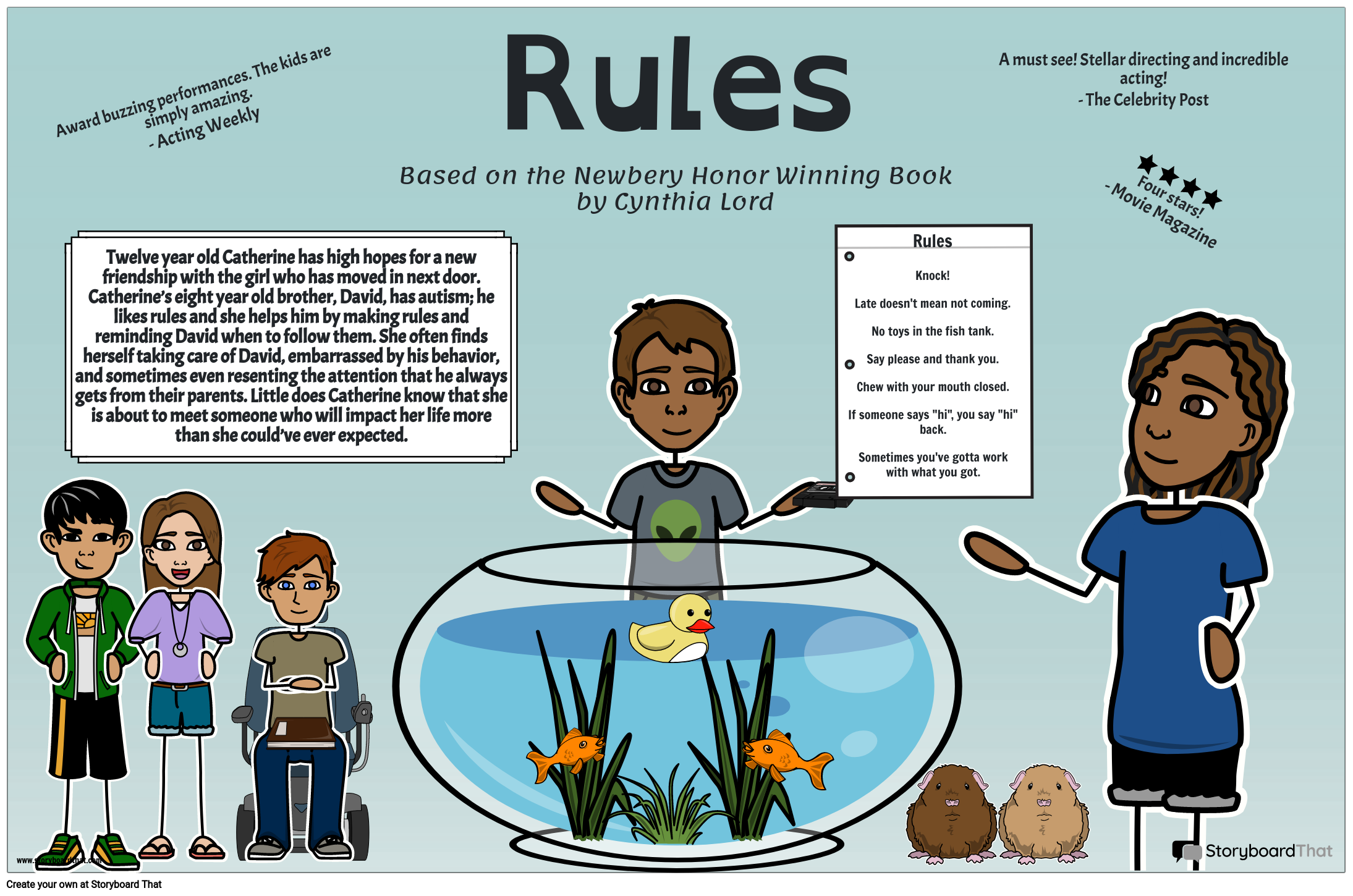So, you're diving into the world of movies, huh? If you're here, chances are you're trying to figure out the ins and outs of what makes a film tick—or maybe you're just trying to impress your friends with some movie trivia. Whatever the case, you're in the right place. Movie rules aren’t just about knowing the technical stuff; they’re about understanding what makes cinema an art form. Let’s get into it, shall we?
Movie rules might sound like a boring checklist, but trust me, they’re more like a roadmap to help you enjoy films on a whole new level. Whether you're a casual viewer or a hardcore cinephile, these rules will change the way you watch movies forever. And hey, if you stick around, you might even learn a thing or two about what makes a great movie great.
Now, buckle up because this is going to be a wild ride through the world of cinema. We’ll cover everything from the basics of storytelling to the little quirks that directors use to make their films stand out. And don’t worry, I won’t bore you with too much jargon. This is about making movie rules fun, not confusing. So, are you ready to dive in?
- Ray Mcelrathbey The Inspiring True Story Behind Safety
- Jerome Jesse Berry Halle Berrys Father His Life Amp Struggles
What Exactly Are Movie Rules?
Alright, let’s start with the basics. Movie rules, simply put, are the unwritten guidelines that filmmakers follow to create engaging, entertaining, and—most importantly—memorable films. These rules cover everything from scriptwriting to cinematography, editing, and even marketing. Think of them as the secret sauce that turns a good movie into a great one.
But here's the thing: movie rules aren’t rigid. They’re more like suggestions that filmmakers can bend or break to suit their vision. Some directors, like Quentin Tarantino, love to break the rules, while others, like Christopher Nolan, prefer to play by the book. It’s all about finding what works best for the story they’re telling.
Now, let’s break down some of the most important movie rules that every filmmaker—and movie lover—should know:
Rule #1: Story is King
Let’s face it, if the story isn’t good, nothing else matters. A great script is the foundation of any successful movie. It doesn’t matter how cool the special effects are or how famous the cast is—if the story doesn’t grab you, the movie won’t stick with you.
Think about it: movies like "The Godfather" and "Pulp Fiction" are classics because their stories are so compelling. They make you care about the characters and their journeys. So, the first rule of movie rules? Always prioritize the story.
Why Are Movie Rules Important?
You might be wondering why we even need movie rules in the first place. Well, here’s the deal: movies are a collaborative art form. There are so many moving parts—actors, directors, writers, editors, cinematographers—and movie rules help keep everyone on the same page.
Imagine a world where filmmakers just did whatever they wanted without any structure. Some movies might turn out great, but a lot of them would be a mess. Movie rules provide a framework that helps filmmakers create cohesive, engaging films that audiences will love.
Plus, understanding movie rules can help you appreciate films on a deeper level. When you know why a director chose a particular camera angle or why a scriptwriter structured a scene a certain way, you start to see the artistry behind the film. And let’s be honest, that’s pretty cool.
Rule #2: Show, Don’t Tell
This one’s a biggie. In the world of movies, actions speak louder than words. Instead of having a character tell the audience how they feel, show it through their actions, expressions, and surroundings. It’s a lot more powerful—and a lot more fun to watch.
Take a look at a classic like "Casablanca." The movie never outright tells you that Rick and Ilsa have a complicated past; it shows you through their interactions and the tension between them. That’s the power of showing, not telling.
Breaking Down Movie Rules: The Nitty-Gritty
Now that we’ve covered the basics, let’s dive into some of the more specific movie rules that filmmakers use to craft their masterpieces. These are the rules that separate the amateurs from the pros.
Rule #3: The Rule of Thirds
This one’s all about composition. The rule of thirds is a photography principle that’s been adopted by filmmakers to create visually appealing shots. Basically, you divide the frame into nine equal parts using two equally spaced horizontal lines and two equally spaced vertical lines. Then, you place your subject along these lines or at their intersections.
Why does this work? Because it creates a more balanced and interesting image. Think about some of your favorite movie scenes—they probably follow the rule of thirds without you even realizing it.
Rule #4: The Three-Act Structure
Most movies follow a three-act structure: setup, confrontation, and resolution. This structure gives films a clear beginning, middle, and end, which helps keep audiences engaged. It’s a tried-and-true formula that works for almost every genre.
For example, in "Star Wars," the first act sets up the world and introduces the characters. The second act is where the conflict really kicks in, and the third act wraps everything up with a satisfying conclusion. Simple, right? But incredibly effective.
Movie Rules in Action: Real-Life Examples
Okay, so we’ve talked a lot about movie rules, but what do they look like in practice? Let’s take a look at some real-life examples from some of the best films out there.
Example #1: "Inception"
Christopher Nolan is a master of movie rules, and "Inception" is a perfect example of how he uses them to create a mind-bending experience. The film follows the three-act structure to perfection, with a clear setup, confrontation, and resolution. But Nolan also breaks the rules when it suits his vision, like when he plays with time and space to create those iconic dream sequences.
Example #2: "The Social Network"
David Fincher’s "The Social Network" is a masterclass in storytelling. The script, written by Aaron Sorkin, follows the rule of showing, not telling. Instead of having Mark Zuckerberg explain his motivations, the film lets his actions speak for him. It’s a brilliant example of how to create a compelling narrative without relying on exposition.
Common Misconceptions About Movie Rules
There are a lot of misconceptions out there about movie rules, and it’s time to set the record straight. Here are a few of the biggest ones:
- Movie rules are rigid: Not true! As we’ve discussed, movie rules are more like guidelines. Filmmakers can—and often do—break the rules when it suits their vision.
- Following movie rules guarantees success: Nope. While movie rules can help, there’s no magic formula for making a great film. Creativity and originality are just as important.
- Movie rules are only for beginners: Wrong again! Even the most experienced filmmakers rely on movie rules to guide their creative process.
Rule #5: Know Your Audience
One of the most important movie rules is knowing your audience. Different audiences have different expectations and preferences. A horror movie audience is looking for thrills and chills, while a romantic comedy audience wants to laugh and fall in love. Understanding who your audience is will help you create a film that resonates with them.
How to Apply Movie Rules to Your Own Movie Watching
So, how can you use movie rules to enhance your own movie-watching experience? Here are a few tips:
- Pay attention to the story: Is it engaging? Do the characters have clear motivations? These are the hallmarks of a great film.
- Look for visual cues: Are the filmmakers using the rule of thirds? Are they showing instead of telling? These are the little details that make a big difference.
- Think about the structure: Does the movie follow the three-act structure? If not, why not? Understanding the structure can help you appreciate the film on a deeper level.
Rule #6: Keep It Real
Authenticity is key in filmmaking. Audiences can spot a fake a mile away, so it’s important for filmmakers to stay true to their vision. Whether you’re making a blockbuster or an indie film, authenticity will always shine through.
The Future of Movie Rules
As technology continues to evolve, so do movie rules. New tools and techniques are changing the way filmmakers approach their craft. Virtual reality, augmented reality, and AI are just a few of the innovations that are reshaping the film industry.
But here’s the thing: no matter how much technology changes, the core principles of movie rules will always remain the same. Storytelling, composition, structure—these are the building blocks of cinema, and they’ll continue to be relevant for years to come.
Rule #7: Embrace Change
One of the most important movie rules is to embrace change. Filmmakers who are willing to adapt and experiment are the ones who will thrive in this ever-evolving industry. So, whether you’re a filmmaker or a movie lover, don’t be afraid to try new things and think outside the box.
Final Thoughts: The Power of Movie Rules
Movie rules might seem like a dry topic, but they’re actually the backbone of the film industry. They provide the structure and guidance that filmmakers need to create compelling, engaging, and memorable films. And for movie lovers like you and me, understanding movie rules can enhance our appreciation of the art form.
So, the next time you sit down to watch a movie, take a moment to think about the rules that went into making it. Whether the filmmakers followed them to the letter or broke them completely, those rules played a part in creating the film you’re watching.
And hey, if you’ve learned something new today, why not share this article with your friends? Or leave a comment and let me know what you think. Who knows? You might just spark a conversation that inspires the next great filmmaker. Now, go out there and start watching movies with a whole new perspective!
Table of Contents
- What Exactly Are Movie Rules?
- Why Are Movie Rules Important?
- Breaking Down Movie Rules: The Nitty-Gritty
- Movie Rules in Action: Real-Life Examples
- Common Misconceptions About Movie Rules
- How to Apply Movie Rules to Your Own Movie Watching
- The Future of Movie Rules
- Final Thoughts: The Power of Movie Rules



Detail Author:
- Name : Bernice Dicki
- Username : kenny.gibson
- Email : omedhurst@gmail.com
- Birthdate : 1981-11-25
- Address : 91326 Fisher Rest New Marciaview, MS 64652-1897
- Phone : 1-616-819-0150
- Company : Feest PLC
- Job : Aircraft Body Repairer
- Bio : Nesciunt nobis doloremque numquam voluptatem. Voluptatem modi eaque quia. Eum non deserunt aut occaecati commodi ipsam eos. Quia modi nisi dignissimos sit officiis perferendis.
Socials
twitter:
- url : https://twitter.com/apredovic
- username : apredovic
- bio : Ipsam vitae laborum architecto fuga. Recusandae saepe qui eum non cupiditate voluptatem inventore. Unde quae harum itaque magni quia ullam quo.
- followers : 4119
- following : 2895
tiktok:
- url : https://tiktok.com/@alexzander_predovic
- username : alexzander_predovic
- bio : Aliquid veritatis explicabo at rerum dolores.
- followers : 5558
- following : 947
instagram:
- url : https://instagram.com/predovica
- username : predovica
- bio : Blanditiis possimus consequatur iusto quaerat. Laborum iusto natus doloribus animi est recusandae.
- followers : 4812
- following : 2159